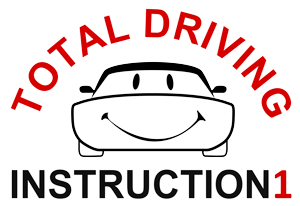The Six Conditions Of Driving
THE SIX CONDITIONS OF DRIVING
The six conditions which influence your driving are Light, Weather, Road, Traffic, Vehicle, and the Driver
 Light
Light
The first requirement of safe driving is to see and be seen.
The problem may be too much light or not enough light. The solution? Adjust your driving to suit the existing conditions. For bright sunshine or snow glare, wear sunglasses and use your sun visor. Avoid looking directly at oncoming bright headlights. Look well ahead to the right for road edge markings as a guide.
For low-light conditions, turn on headlights — not parking lights.
In all situations involving adverse light conditions:
- Reduce speed.
- Increase following distance.
- Keep a sharp eye out for pedestrians and cyclists.
- At night avoid driving at a speed faster than you can safely stop after seeing an object in the beam of the vehicle’s headlights.
- Keep all vehicle lights clean and in working order, and make sure headlights are properly aimed.
 Weather
Weather
Sometimes you have to battle the elements for traction, visibility, and vehicle control. Your best weapon? Good Judgment. That may mean a temporary surrender — postponing a trip until conditions improve.
Don’t be a “peephole” driver. Clean the windshield and all windows of snow and ice — and don’t start out until your defroster has thoroughly cleared all fogged glass.
Make yourself visible to others. Remove buildups of snow, ice and mud from headlights and taillights. Make sure all vehicle lights are in good working order.
Most importantly, slow down, maintain a safe following distance, and be alert:
- When raining, roads are slipperiest at the start of the rainfall, Surface oil and grease form a slick film that’s not washed away until after 20 or 30 minutes of hard rain.
- In light, misty rain the oil and grease will form a slick film that never gets washed away.
- Too much speed, too thin a tire tread or improper tire pressure may lead to hydroplaning. Steering and braking are then affected because the tire isn’t in contact with the road — it’s actu¬ally riding on a thin layer of water.
- When the temperature nears freezing, you may encounter water on a roadway hut ice on a bridge. That’s because bridge temperatures are two to three degrees Celsius colder than the rest of the road.
- High winds make steering difficult. Control your vehicle, and watch out for other vehicles swerving into your path.
- Use low beams — not high beams or parking lights — when driving in fog. Low beams direct light onto the road ahead. Light from high beams will hit the fog and be reflected off it.
To avoid hydroplaning:
- Don’t drive with bald or badly worn tires.
- Slow down when there is heavy rain, standing water or slush on the road.
The sketches illustrate how hydroplaning occurs. At low speeds, tire cuts through water at tire-road juncture, and remains in complete contact with the road.
At speeds above 50 km/h (30 mph), water wedge may penetrate tire-road contact and partial hydroplaning occurs.
At speeds above 90 km/h (55 mph), water wedge may increase and tire losses complete contact with road, causing total hydroplaning.
 Road
Road
Long and winding. Wide open. Rough. What other words describe the roadways you drive on?
Conditions change from road to road — from a side street to a main thoroughfare, from a back road to an expressway. And conditions on the same road change — with weather, traffic and construction.
A defensive driver recognizes the changing conditions and makes the necessary allowances for them:
- Be alert to the shape, surface, and shoulder of the road.
- Respond to the signs of potential hazards. Among the skid-producing agents to watch for are wet leaves, gravel, sand, mud, water and ice.
- Test road traction by lightly applying the brakes at slow speed to get the “feel” of the road.
- Reduce speed under slippery conditions.
 Traffic
Traffic
When you think of traffic, do you think of bumper-to-bumper tie-ups? Well, don’t forget that others — bicyclists, pedestrians, motor¬cyclists — share the road, too. The greater the amount of traffic on the road, the more chance for conflict and collisions. Here are some tips to smooth the way:
- Always yield the right-of-way to pedestrians.
- Treat motorcycles as full-size vehicles.
- Go with the flow. Travel at the same pace as other traffic, staying within the speed limit. If most other vehicles are speeding, stay to the right.
- Avoid congested routes whenever possible. Be considerate. When it’s necessary to avoid conflict, yield to others, even if they should rightly yield to you.
 Vehicle
Vehicle
To prevent a collision, you need your vehicle to respond reliably and efficiently. Vehicle defects endanger you and others on the road.
Faulty defroster or windshield wipers impair your ability to see potential hazards. If brakes, tires or steering are faulty, the ability to act in emergency situations is impaired. If vehicle lights aren’t working, you cannot see or he seen.
Make sure these other vehicle components are working to help you:
- Horn. Should be used to alert other road users of your presence and to establish eye to eye contact. Be seen.
- Mirrors (rearview and side). Know what’s behind and beside you. Remember, they do not cover blind spot(s).
- Exhaust System. Prevent leaks of deadly carbon monoxide fumes into your vehicle.
- Occupant Restraints are lifesavers, but only when they’re used.
- Before driving an unfamiliar vehicle, take time to get to know where the controls are and how they operate.
 Driver
Driver
Driver condition is the most important of the six conditions. Are you physically and emotionally fit to drive? If not, you limit your ability to adjust to the other five conditions and to prevent collisions. The following factors all affect your fitness to drive:
ALCOHOL
Don’t mix driving and drinking. Alcohol adversely affects judgment, reaction time, and coordination.
AGE
Know your limitations and adjust to them. Drivers under age 25 tend to he in good physical condition, but lack experience and mature judgment. Drivers over 65 have experience, hut may have diminished physical and sensory capabilities. The ability to see well at night decreases with age and is noticeable after about age 40.
ATTITUDE
Aggressive, “me-first” personalities frequently cause collisions by daredevil maneuvers, “jackrabbit” starts, and screeching halts.
DROWSINESS AND FATIGUE
Don’t drive when your tired. Pull off the road for exercise and fresh air. Don’t rely on coffee to keep you awake: take a nap or let someone else drive.
DRUGS
Ask your physician about the effects of prescribed drugs and drug combinations on driving ability. Illegal drug use severely affects driving skills, as does the mixture of any drugs with alcohol.
PHYSICAL IMPAIRMENTS
Vision and hearing problems, muscle weakness, uncontrollable epilepsy, heart disease and diabetes are conditions that can increase your driving risk, consult your physician about whether you should drive.
EMOTIONS
Heightened emotions — anger, frustration, worry —reduce concentration. Even joy and excitement can take your mind off driving. Get your emotion in check before getting behind the wheel.
THE PRE-TRIP MENTAL INVENTORY
The first step in “recognizing the hazard” is taken before starting the vehicle. This first step is called a pre-trip mental inventory and you should begin today to make it a regular part of your driving behavior.
Here’s what to do before starting your vehicle.
Ask Yourself:
- Are there any unusual conditions of light, visibility, weather, road or traffic that I can expect?
- How is the condition of my vehicle? Is it in top running order and fit to drive?
- How do I feel, mentally and physically? Am I fit to drive? Am I rested or tired; calm or emotionally upset? ff1 am taking medication, how will that affect my driving?
If you’ve answered these questions favorably, fasten your occupant restraint, turn on the ignition and go. You are mentally prepared for the driving conditions on the trip ahead.
But, if you or your vehicle are not prepared for the trip ahead, make alternate arrangements: take a bus or a taxi; walk or call a friend for a ride; but DON’T turn on that ignition. Remember, you must do everything REASONABLE to prevent collisions.
